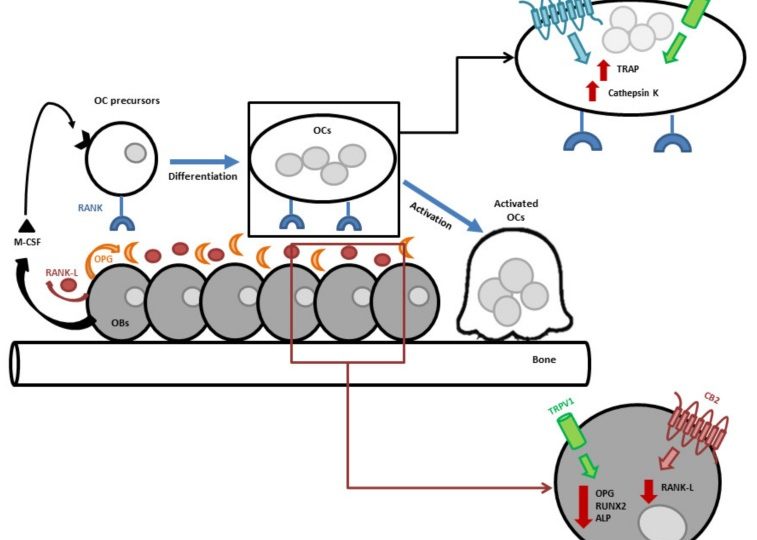
Bone undergoes continuous destruction and formation. In healthy individuals, the two processes are in fine balance, maintaining a constant, homeostatically controlled amount of bone.
Bone diseases are prevalent across the globe. Osteoporosis is the main cause of bone loss, and it can be caused by several factors such as postmenopausal estrogen decrease, iron overload, glucocorticoid (GC) treatments, hyperthyroidism, and chemotherapies.
Bone cells express CB1 and CB2 receptors and TRPV1 channels. Anandamide (AEA) and 2-arachidonoylglycerol (2-AG) and the enzymes involved in their synthesis and degradation are present in bone cells. AEA and 2-AG seem to modulate osteoblast and osteoclast differentiation.
CB1 and TRPV1 stimulation produce osteoclastogenic effects, while CB2 stimulation has an anti-osteoclastogenic effect.
CB1 activation produces age-dependent effects on bone mass by regulating the differentiation of osteoclasts and Mesenchymal Stem Cells (MSCs) into osteoblasts and adipocytes. Cannabidiol (CBD) is suggested to inhibit osteoclast and stimulate osteoblast differentiation by blocking GPR55.
The pharmacological modulation of these receptors contributes to the maintenance of bone mass by stimulating stromal cells and osteoblasts and inhibiting monocytes and osteoclasts. The Endocannabinoid system may be a pharmacological target in preventing and treating bone diseases such as osteoporosis.


















